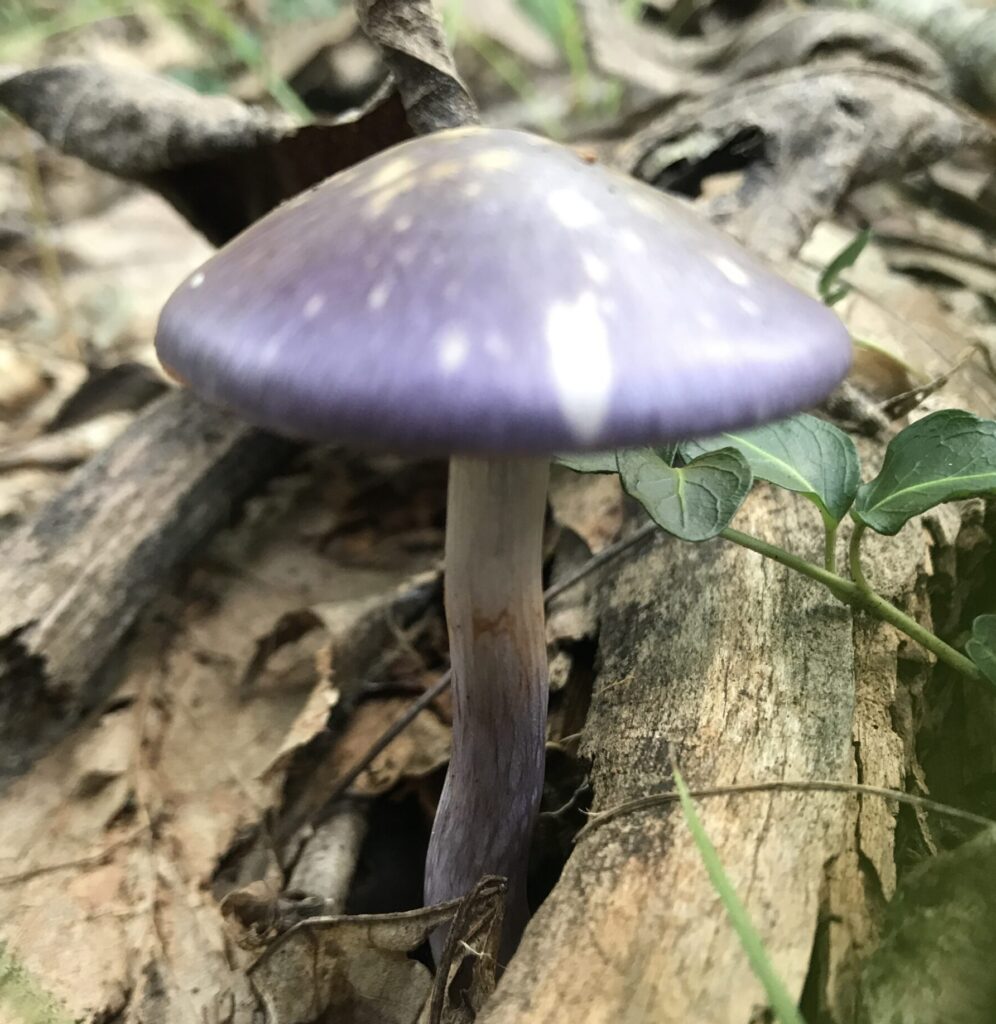| Ecology & Habitat | Mycorrhizal Growing Singly or Gregariously/Trooping (many mushrooms in a small area) It can be found growing in deciduous forests. However, I often find it growing out from underneath dead wood, which I assume creates an optimal fruiting environment for it. It is predominantly associated with Oak Trees |
| Cap | Purple cap, often rusty brown near the center and featuring lighter lilac or white streaks and spots. Often times slimy, but can also be dry. |
| Gills | Light-lilac gills, aging to rusty or cinnamon colored as the spores matures and begin to stain the gills. |
| Stem | White to light lilac, fibrous. |
| Partial Veil | The cob web like veil leaves a cob webby ring or annulus on the stem. It is initially light lilac to white, but quickly turns rust colored as the spores matures and begin to stain the ring. |
| Spores | Rust Colored |

Cortinarius iodes, also known as the violet webcap, viscid violet webcap, or the spotted violet cort. Its name is derived from the Latin “Cortina” meaning “curtain” which describes the cobweb-like veil that covers the gills of the young fruiting body. This mushroom has a striking appearance with a cap which is deep violet color, often times slimy or sticky. It may also be a rusty brown color near the center of the cap, and feature white spots or streaks on it. The gills are free, and initially pale violet before turning rusty brown as the mushroom matures and the rust colored spores are released. The stipe or stem is white to pale lilac and fibrous, and features a fibrous or cob webby ring or annulus on the stem. However, in advanced age, the ring may degrade completely and no longer be visible. There are a few other purple Cortinarious species that this species can be confused with. Such as Cortinarius violaceus and Cortinarius purpurascens. These also have violet-colored caps. Overall, Cortinarius iodes is a stunning mushroom species that is easily recognizable with its unique macrofeatures.






